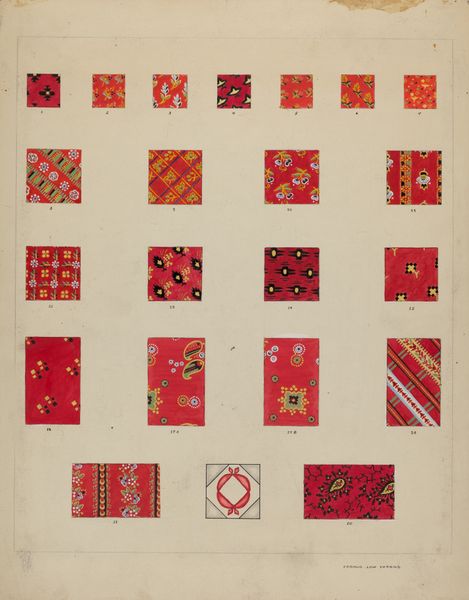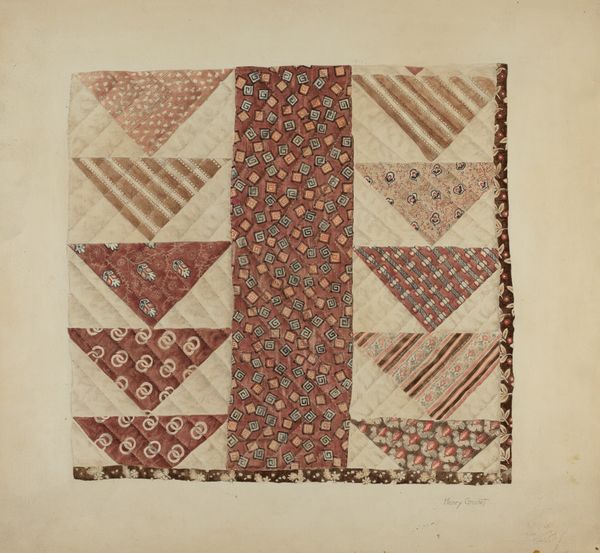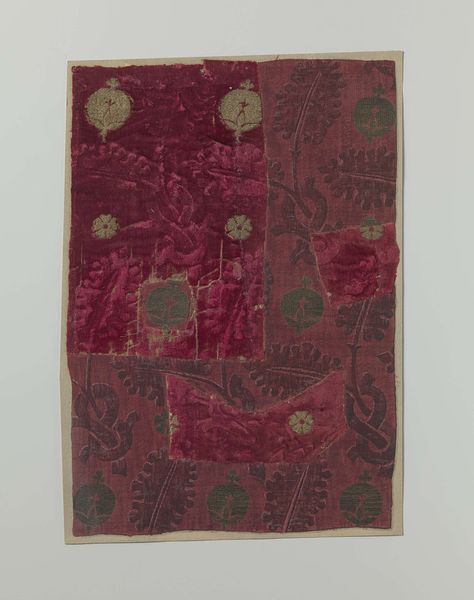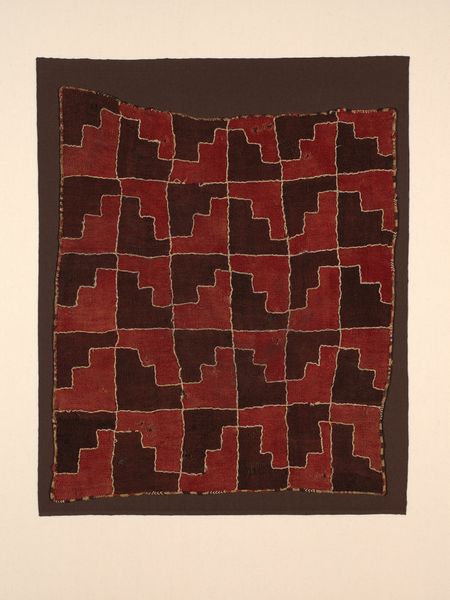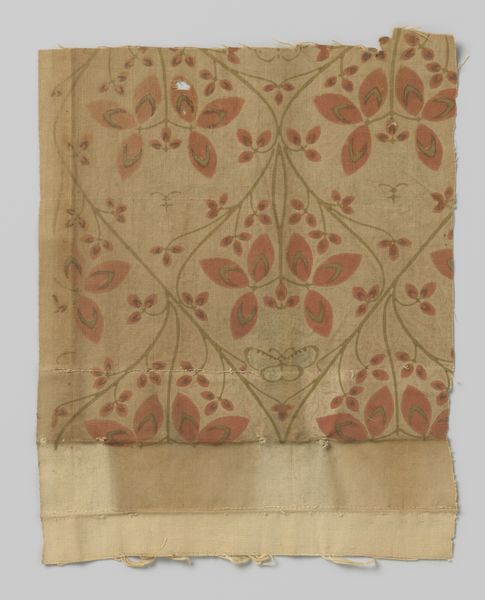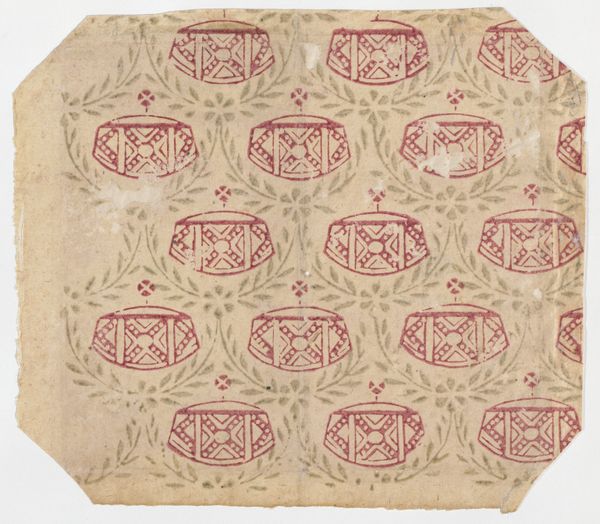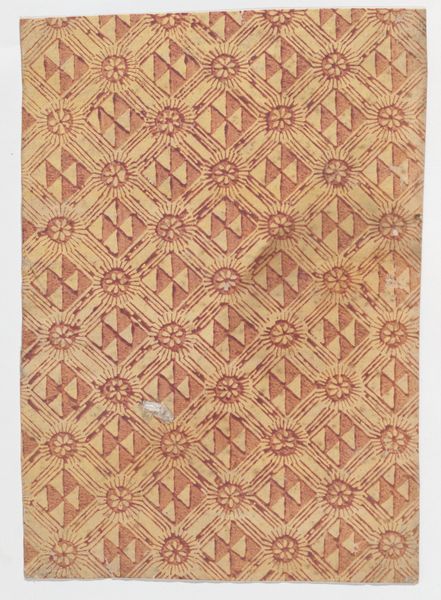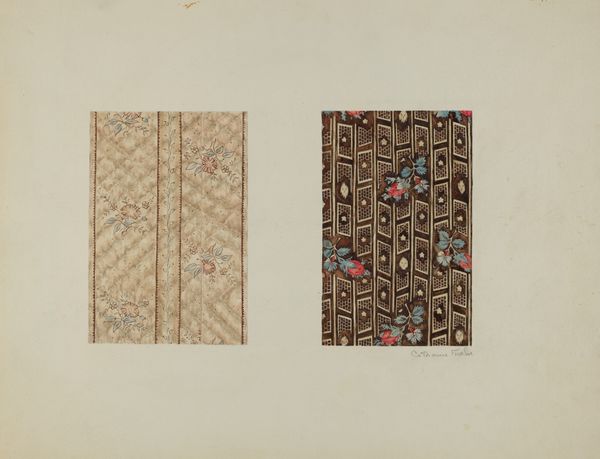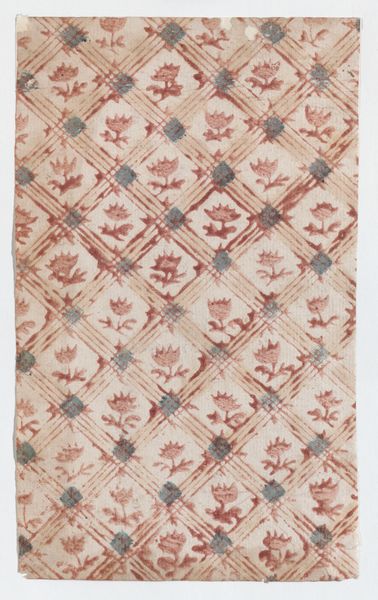
fibre-art, weaving, textile, cotton
#
fibre-art
#
weaving
#
textile
#
geometric pattern
#
geometric
#
geometric-abstraction
#
repetition of pattern
#
pattern repetition
#
cotton
#
indigenous-americas
Dimensions: 50.2 × 53.7 cm (19 3/4 × 21 1/8 in.)
Copyright: Public Domain
This tunic fragment was created by the Wari people, though we don't know exactly when. It’s made of intricately woven camelid fibers – likely alpaca or llama wool. The Wari were master weavers, and this fragment gives you a glimpse into their sophisticated textile production. The geometric patterns, with their interlocked shapes and stylized motifs, were painstakingly created on a loom. Each color would have been dyed using natural pigments. The scale and complexity of the weaving suggests a highly organized workshop system. Weaving of this quality would have been a specialized skill, and access to fine textiles like this was likely a sign of status and power. While this is only a fragment, it speaks to the artistry and labor involved in creating textiles that were not just beautiful, but also deeply meaningful within Wari society. It reminds us that cloth can be a potent form of communication and cultural expression, blurring the lines between art, craft, and social life.
Comments
No comments
Be the first to comment and join the conversation on the ultimate creative platform.

